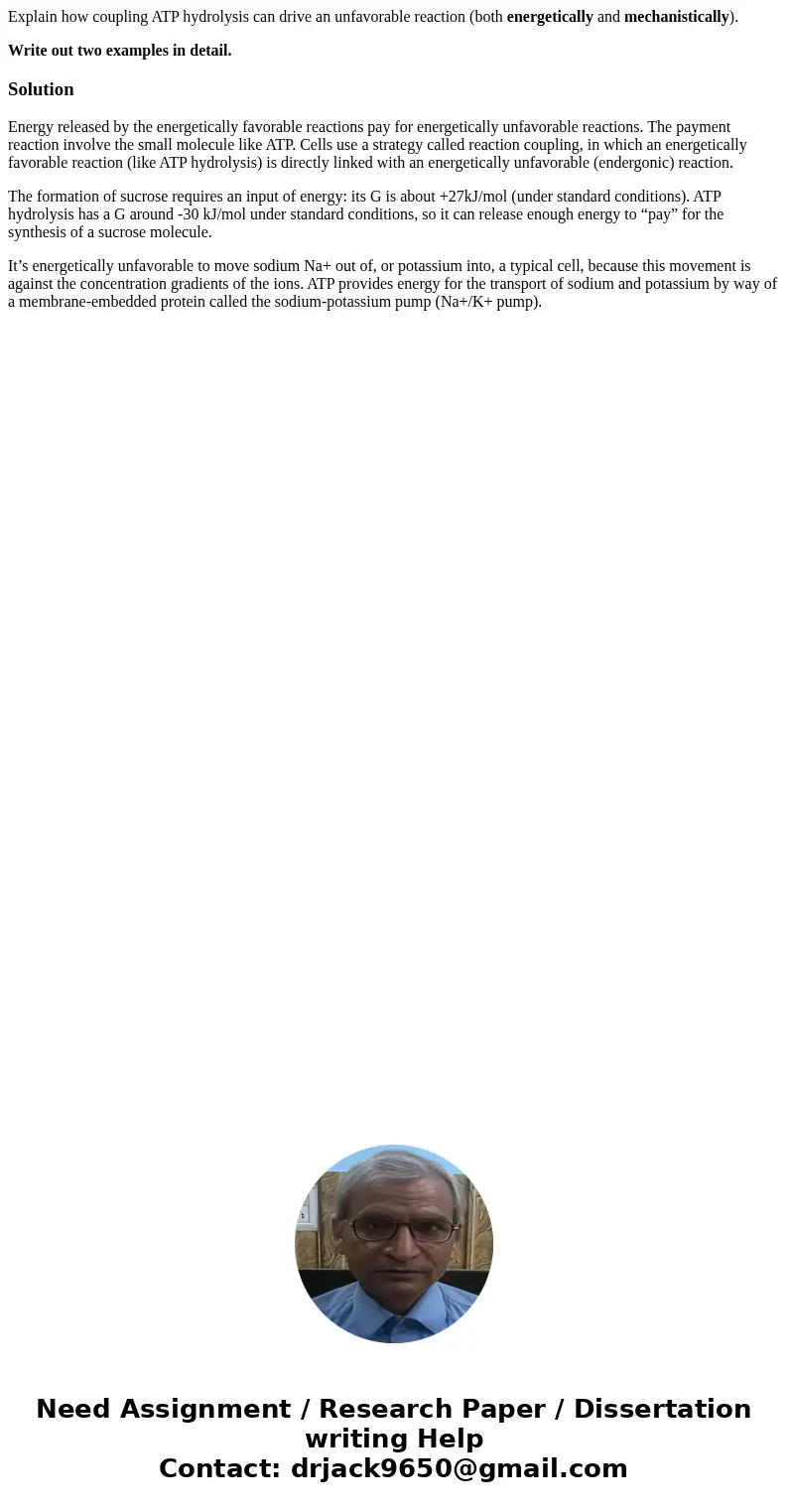Explain how coupling ATP hydrolysis can drive an unfavorable
Explain how coupling ATP hydrolysis can drive an unfavorable reaction (both energetically and mechanistically).
Write out two examples in detail.
Solution
Energy released by the energetically favorable reactions pay for energetically unfavorable reactions. The payment reaction involve the small molecule like ATP. Cells use a strategy called reaction coupling, in which an energetically favorable reaction (like ATP hydrolysis) is directly linked with an energetically unfavorable (endergonic) reaction.
The formation of sucrose requires an input of energy: its G is about +27kJ/mol (under standard conditions). ATP hydrolysis has a G around -30 kJ/mol under standard conditions, so it can release enough energy to “pay” for the synthesis of a sucrose molecule.
It’s energetically unfavorable to move sodium Na+ out of, or potassium into, a typical cell, because this movement is against the concentration gradients of the ions. ATP provides energy for the transport of sodium and potassium by way of a membrane-embedded protein called the sodium-potassium pump (Na+/K+ pump).

 Homework Sourse
Homework Sourse